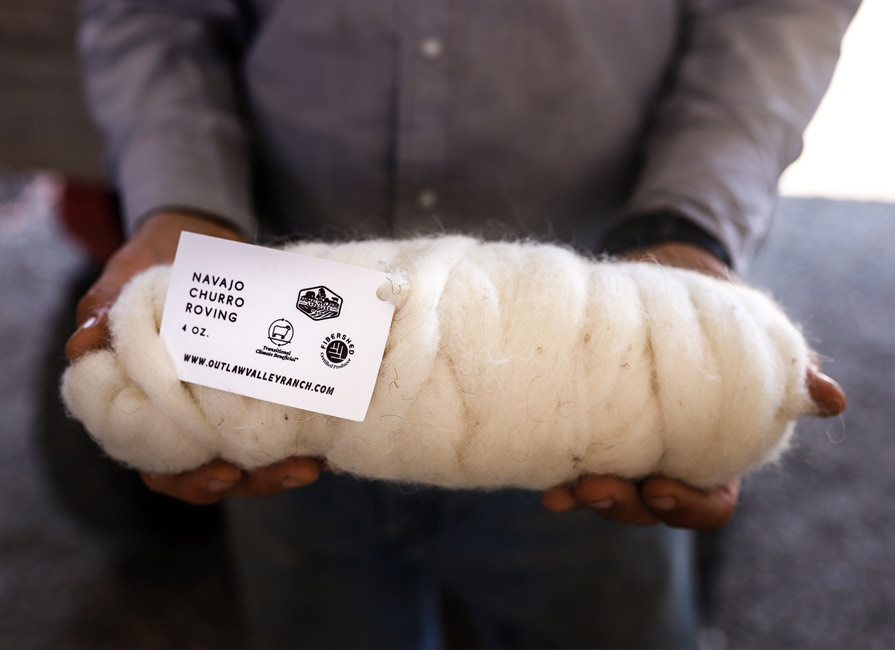Market research shows that today’s consumers are increasingly interested in knowing where their food comes…

A Brave New World
Following the global outbreak of COVID-19, we know that many farmers (particularly those who supply the hospitality sector) lost the majority of their markets almost overnight. We also know some farmers with established home delivery services, online sales or farm shops have been inundated by desperate customers. At the same time, many of the services and supply chains that farmers rely on—think animal feed or veterinary services, slaughter facilities and outlets like farmers’ markets—are at risk of disruption.
Survival mode
Regardless of your business model, many farmers are now in ‘survival mode,’ forced to make rapid decisions that will impact the future of their farms.
So how do you decide what to do when faced with a total market collapse or unprecedented demand that is sudden, unexpected, unavoidable and unplanned for?
At A Greener World, we’re proud of our reputation for being a practical, common-sense program that’s grounded in the realities of everyday farm and ranch life. Indeed, most of our auditors and Compliance staff have many years of practical experience in farming. And we know from personal experience that when markets collapse suddenly—or demand unexpectedly explodes—it is important for farmers to take time out to look objectively at their own unique situation in order to make realistic and honest decisions for the future. This takes a lot of discipline: it can be very hard to remain objective when you have so much of your identity and life invested in your farm business. But it is an absolute necessity.
What is your market?
Farmers who are selling daily or weekly will have very different options compared to those who are selling monthly, quarterly or even once a year (for example, those who raise turkey or geese for the Holiday seasons).
In the case of market collapse, is it possible to delay marketing an animal? Producers who are raising pigs and poultry have very limited options once these animals are in a growth system due to the ongoing feeding costs—even if keeping animals on a maintenance diet. For farmers with ruminants it is often easier to find more land on which to keep animals or to reduce associated feed costs. But delays in selling or moving stock can quickly result in farms running out of lower cost pasture options and increasingly relying on more costly conserved forage and feeding alternatives.
In either case, pastures and housing can quickly fill up fast. Where freezer space is available, farmers can go ahead and slaughter and store. But this obviously presents additional risks if the market does not recover quickly enough, for example, or where your customers are seeking only fresh product.
On the other hand, when demand suddenly explodes, a farm can be faced with excess demand —and the risk of losing their market to those who can meet it. In such situations, a farm can quickly move all their current production and start selling next year’s product as well. However, we are aware that obtaining slaughter slots to process the extra sales can be a big problem. With many species, such as cattle, it can take two years or more to increase supply with the farms’ own breeding herd production. Similarly, it generally takes 10 months or more to bring farrow to finish pigs to point of sale. The only option is to rapidly source either feeder animals or point-of-slaughter animals to meet excess demand.
What alternative markets are available?
Is home delivery an option? Or, more likely, can you work with existing local, regional or national distributors and marketers who are supplying local, regional and national markets?
In many areas, local restaurants that have been forced to close are attempting to operate as takeout/delivery services or local food hubs. Could they provide a new outlet for your products? Or are there other more general markets available that could help mitigate costs and lesson potential losses? We have seen an explosion of online suppliers of high-quality, specialized meats; perhaps these outlets can offer new market opportunities without the complications of marketing and shipping yourselves.
If you are interested in setting up home delivery or online sales there are plenty of options available. Check our online resources for sources of online sales advice and associated suppliers.
How secure are your markets?
Farmers’ markets and similar locations where large numbers of people gather in one place are now subject to significant restriction, and some have even closed. Will your existing clients and outlets still exist or be able to buy from you in the future? It is an open question as to who will remain financially viable when everything settles and what marketing opportunities will exist. Talk to your customers. Seek to minimize your exposure to risk, wherever possible.
Supplies and resources
Will the necessary supplies and resources to maintain your business—such as feed, slaughter capability, delivery and processing—continue to be available in the short-, medium- and long-term? Supply chains are rightly being prioritized for human food; and we are already hearing animal feeds are taking (quite rightly) second seat to human feed. Veterinary services, feed suppliers, slaughter/processing facilities and other important services have also been reduced or shut down due to virus-related labor shortages, for example.
We are aware that the sudden availability of previously dedicated commodity animals for finishing and slaughter has caused unexpected complications, because the animals can be sourced for a fraction of their normal value—and huge short-term profits are possible. Some plants that slaughtered for individual clients temporarily switched to slaughtering excess commercial production, either halting or significantly cutting back on slaughter for their normal clients. We have also seen consumers purchasing animals direct from farms that did not previously have a direct market program and having them slaughtered for their freezers. Again, this has caused slaughter slots to fill quickly.
Try to stay in regular contact with your customers, suppliers and service providers. Talk to your vet about potential shortages of key products like medicines and disinfectants, and discuss possible mitigating strategies/alternatives.
How long will the current situation last?
At present there is no answer to this question. The situation is constantly changing. Try to listen to trusted sources for information or guidance.
What is my current financial situation?
What resources can you bring to bear to help weather the current situation? How much access to capital do you have, and what type?
How long will it take my farm to recover?
This will depend on your unique situation: your markets, how long the crisis lasts, any government action/support, personal resources available and tolerance to debt and future income producing ability.
What is my risk tolerance?
You are going to be making decisions based on imperfect information. There may be some facts, alongside educated guesses and some wild speculation on how things will unfold. You will be right on some of it and wrong on others, as will all the “experts” out there. Some people are more comfortable with higher uncertainty than others. Similarly, the tolerance of different levels of debt and risk will be different for everyone, too. You will have to decide how much you are willing to invest to keep the farm operating. How much of your own savings are you willing to risk, or money borrowed from others?
Time to make plans
You need to make both short-term and long-term plans, based on the questions above. Situations like this are very fluid and plans must be adjusted based on the latest information.
We must remember that sometimes things are simply beyond our control and that the best solution may also be the hardest. In the extreme, that might be to exit farming—or to shut down the farms’ direct marketing operation and try again once things have stabilized.
Timing and where you are in life will make a big difference. If you have good markets and are well funded,
the coronavirus outbreak may represent just a bump in the road. If you just started farming and you won’t be marketing until next year, then it all could be forgotten by then. But if you were already struggling and you are resource-scarce it may be time to look to other options.
Every farmer needs to evaluate their situation based on their individual goals and the resources available to them. By being prepared and planning ahead, you can lessen the impact of potential supply-chain interruption over the coming months. It is always better to make a decision based on the facts of your situation than to have it made for you.
As always, please let us know if we can help you to navigate this ever-changing environment.
BIG QUESTIONS
Take a minute and ask yourself a few simple questions …
- Where does my animal feed come from and what supply interruptions could occur? Do I have sufficient on-farm supplies to see me through? What’s the lead time for ordering?
- What if I have to keep my animals on the farm for a prolonged period? Where will I put them? What would I feed them? And how much will that cost? Can I afford the cost?
- If my slaughter plant closes down, what alternatives exist? How do I communicate with my customers if my product may not be available?
- If my distributor or delivery service is forced to close how would I get product to my customers?
- If all of the things that could happen DO happen, have I got enough resources to be ready?



